Even though splits have been around since the late 90s, it seems like in the past few years, the growth in popularity of touring has hit an all-time high, with more and more people venturing into the backcountry in search of empty zones and perfect turns. Backcountry gear in Australia and New Zealand seems to be walking off the shelves at the moment – splits are rarer than hen’s teeth right now and good luck finding a pair of touring bindings!
So why all of a sudden has walking up hill become the cool thing to do?
Maybe it’s the improvements in technology – the modern splitboard rides almost as well as your regular freeride board. Perhaps it’s COVID, with restrictions and resort capacities in place, let alone ticket prices, it seems people in the past two seasons have enjoyed the freedom of being able to take a couple laps away from crowds and hand sanitizer. Plus splitboarding really speaks to any type of boarder – riders like Danny Davis, Nick Russell, Bryan Iguchi, Kimmy Fasani and even closer to home Jye Kearney and Carlos Garcia Knight are giving splitboarding a crack.
But with the increase in people heading out beyond the resort boundary, it’s more important than ever to know what you’re doing. There is nothing more peaceful and enjoyable than being in the mountains riding powder with no one else around – but it does come with its risks.
We’ve curated some tips from Burton’s local backcountry ambassadors to make your experience beyond the ropes as safe and enjoyable as possible. These are the crew who are out there, day after day, dedicated to the split. They hail from the Snowy Mountains in Australia and over the ditch in NZ. Jake, Kate, Chris and Adam are all passionate experts, with experience we all wish we had.
Burton is giving away a AST1 Avalanche course plus an AK backcountry pack to one lucky backcountry enthusiast looking to expand their knowledge. Click here to enter now. How to enter? Tell us in 25 words or less what your top three most important things to never leave home without when heading into the backcountry. We’ll pick our favourite answer to receive this prize.

Get Trained Up.
If you’re heading out into the backcountry, at home abroad, training is super important. At minimum, I believe you should have Level 1 avalanche training as a minimum. It helps for this to be coupled with basic First Aid and navigation training.
Sort your safety kit.
Get your safety equipment kit sorted: beacon – shovel – probe, and more importantly, know how to use it. Do some drills, practice some scenarios with your touring companions. I would also recommend a Garmin inReach or spot locator, and always keep a well stocked first aid kit and spare parts kit too.

Know your crew.
Understand the abilities for the crew you head out with. Get to know their strengths and weaknesses. Train together and spend time in the backcountry together before heading out to more remote places.
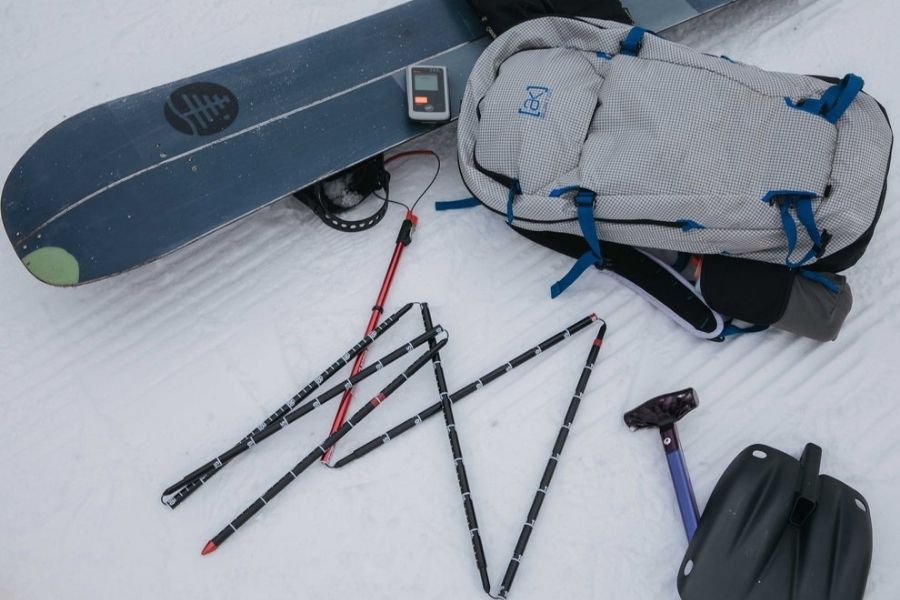
Snacks, plenty of them.
G.O.R.P; stands for Good Ol’ Raisins & Peanuts. This is my go-to trail mix, the perfect combination of sweet & salty. I’m the kinda girl who’s entire pack is just snacks, the person who pulls out baked cookies at the summit, the one who has a granola bar hidden in every pocket. Here’s how you make G.O.R.P; grab a box of cheerio’s, mix 3 handfuls with a bag of plain m&m’s, a bag of salted peanuts, and a bag of sultanas. Sounds simple, tastes amazing.
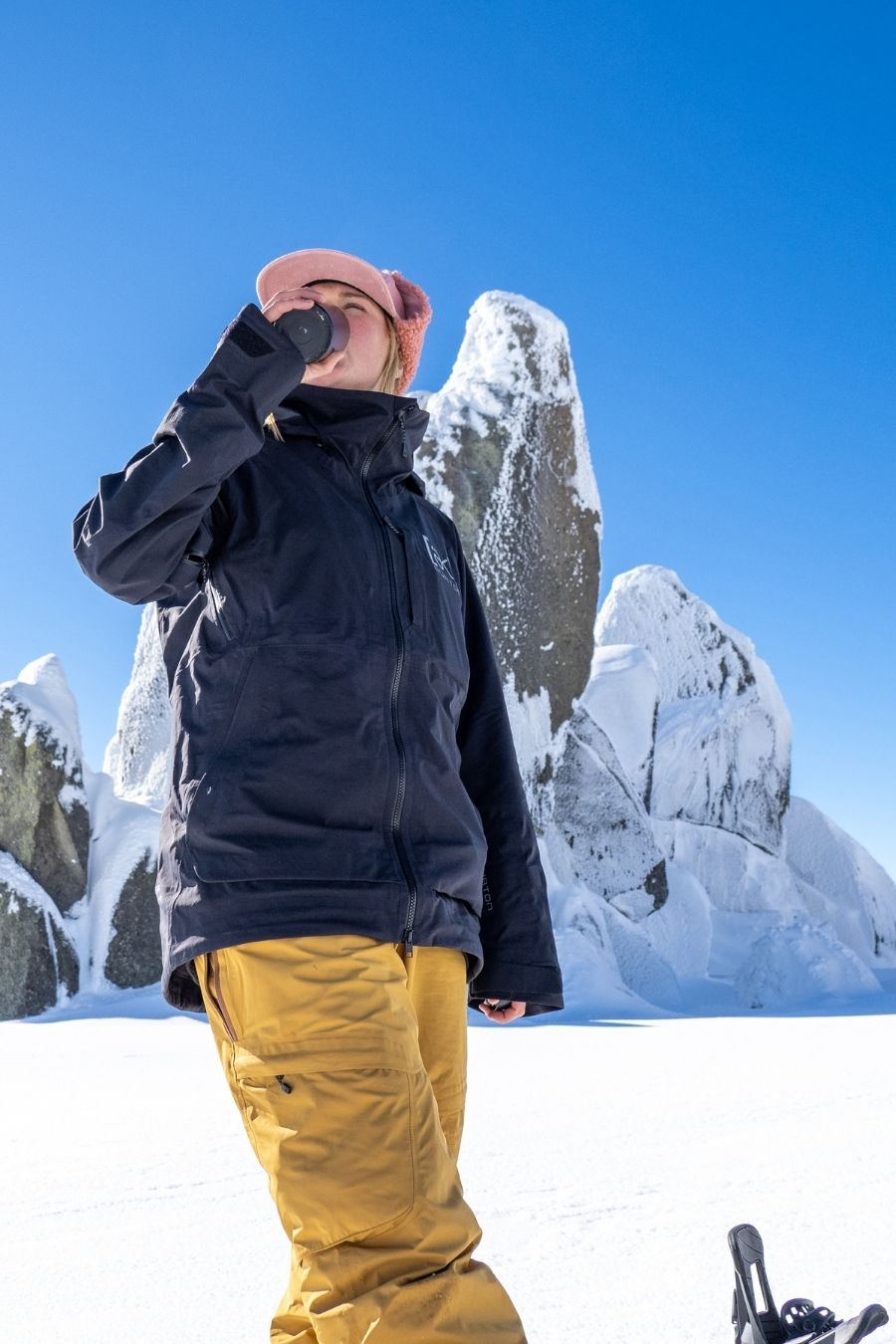
Traction control.
Skeats; I never leave the house without these in my backpack. Skeat’s are essentially ski straps with mini crampon spikes on the bottom. Designed for Australian freeze-melt conditions, just attach them to your ski or splitboard base and head straight up those slippery slopes! They are super lightweight so you won’t even notice the extra weight in your pack. Better yet, take the spikes off and it doubles as a regular old ski-strap when you need to make an a-frame with your pack and ski’s on steep boot packs up.
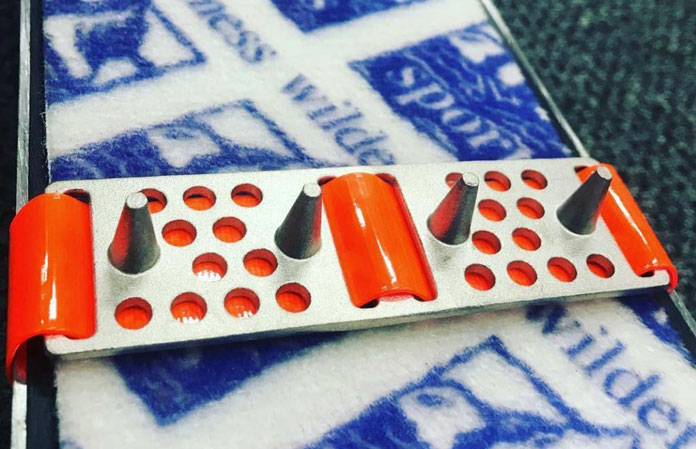
BYO Couch.
Bothy & Sit Mat; This combo may just save your life one day and they make for a boujee lunch shelter in storms. A Bothy is a super cosy, lightweight emergency shelter that is like a tent without the poles. To use it, you simply dig a quick pit for your feet, throw the Bothy open over you and your touring buddies head, and sit down on the side of the pit with the edges of the wall under your bum to keep it secure. The sit mat (I use a sea to summit z-lite) is for comfort, so your bum doesn’t get cold on the snow but also acts as an awesome emergency splint when accidents happen.
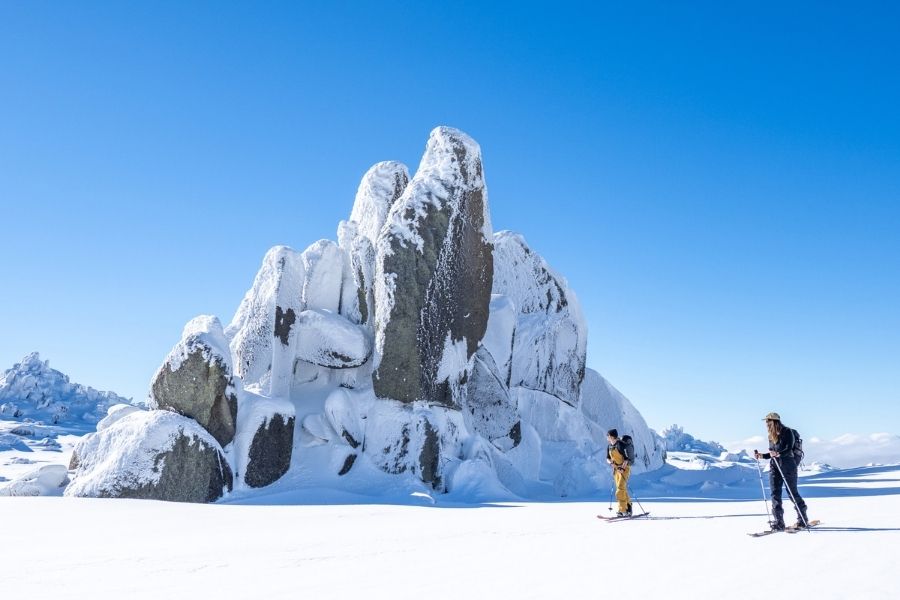
Know your zone.
MSC Maps; whilst not navigational quality, these maps are those wanting to learn the names of the ski areas and faces in the backcountry. Made by Mountains Sports (Safety) Collective, these guys are here to give Australians an update on backcountry conditions, and educate on safe travel in the backcountry. The maps are great for trip planning, and opening your eyes to different ridable terrain in the backcountry.
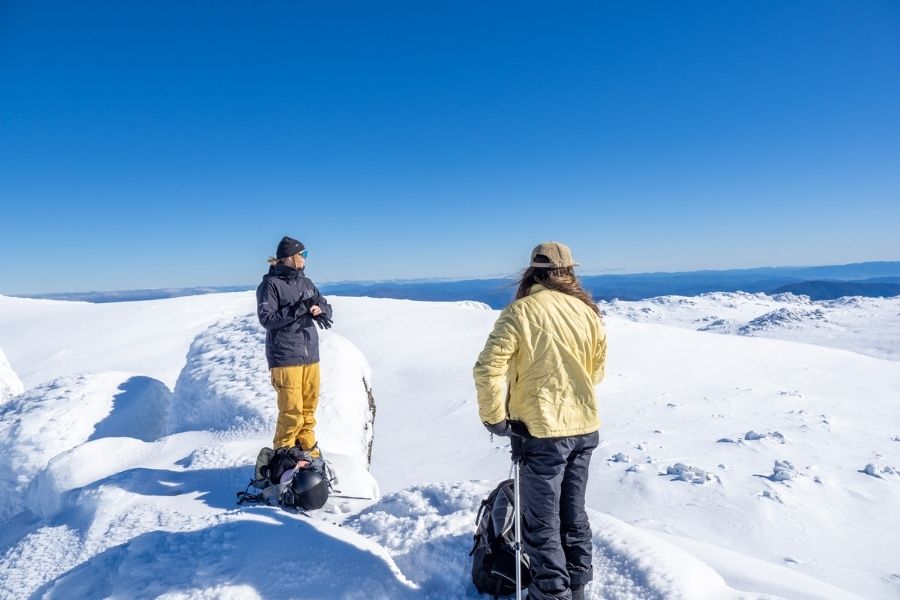
Expect Ice.
In Australia, be prepared for icy terrain, lots of it. I never tour without crampons and an ice axe, I learnt that the hard way. Almost every tour I use them. Australian mountain aspects are so exposed that often it is just an ice rink out there. After riding a steep line with firm snow it’s much easier to throw on crampons and use your ice axe to get back up.
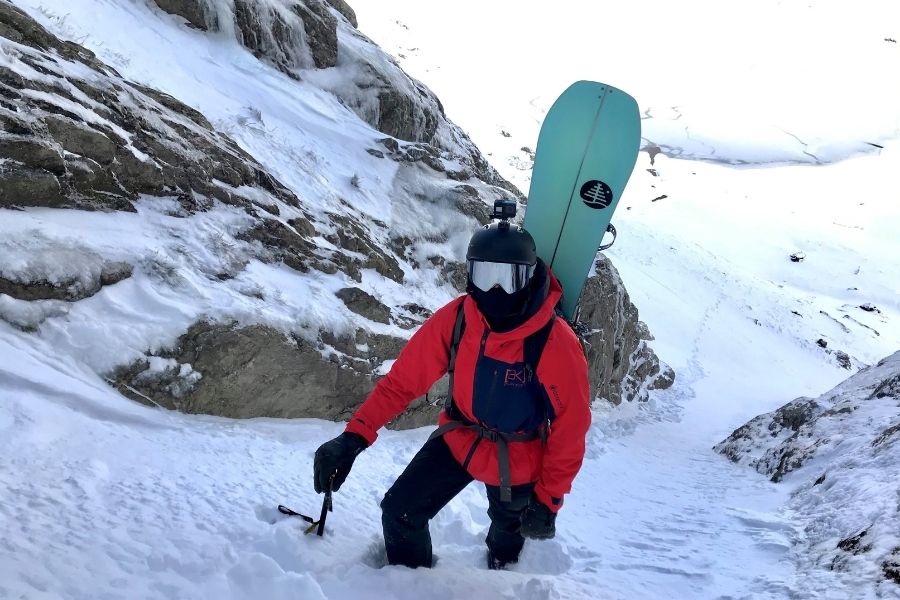
Fuel up.
Eat well and drink plenty of water. When you spend all day touring you are using a lot of energy, to keep the energy levels up you need to fuel your body with great food and plenty of water.
Stop and smell the roses.
Take the time to enjoy the space and take in the views. I’m my own worst enemy with this as we are always chasing objectives but stopping for half an hour at the top of a peak and enjoying the views always soothes the soul. Just remember you never get today back.
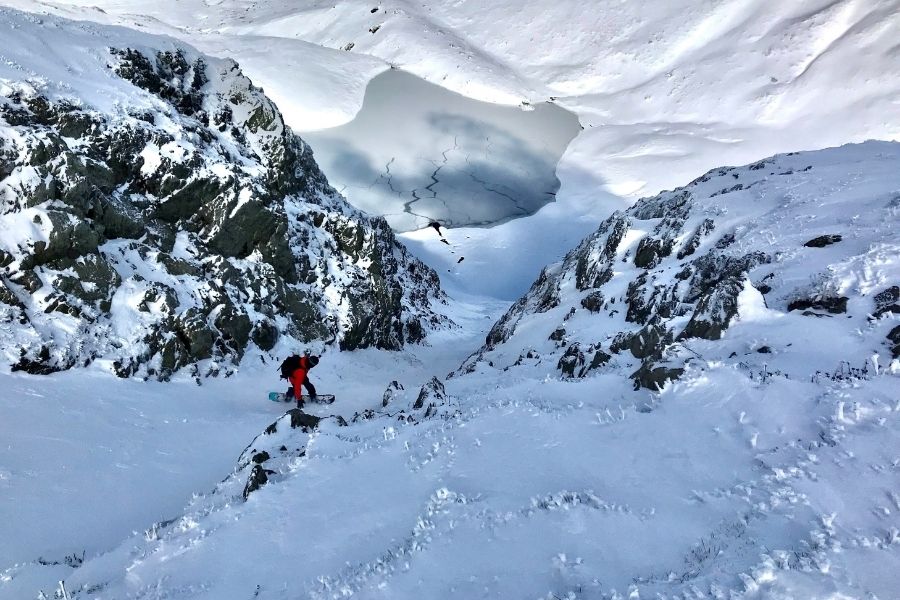
Make the time to pack.
Forgetting shit sucks, so make the time to do a good pack job. Write a list, clear some floor space and get eyes on all your gear before shoving it into your bag. Always make sure your shovel and probe are easy to access and be smart about what order you pack things down, because you’re not going to need your sleeping bag on the skin up.
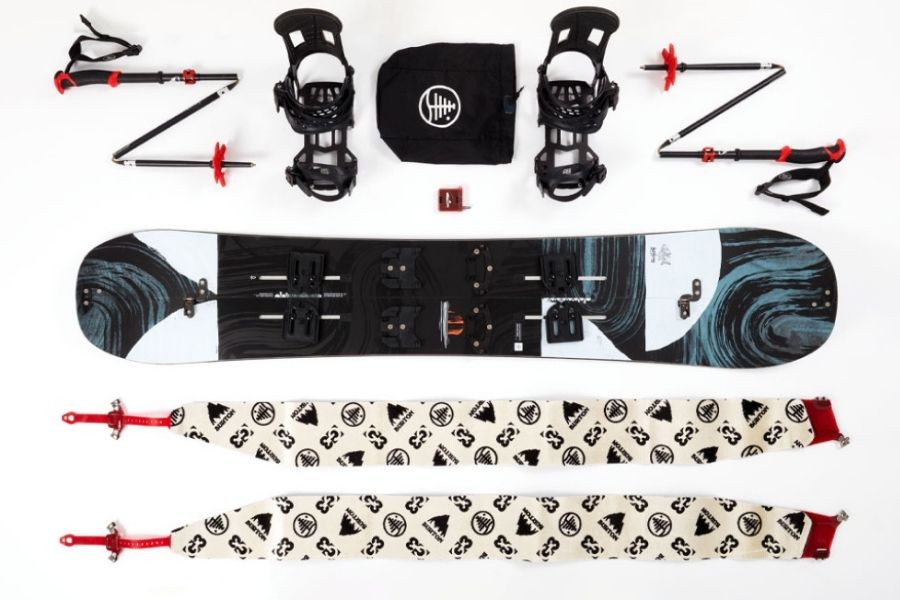
Check your gear (twice) before you go.
It doesn’t matter if you’re in the slack country or heading out on a multi-day mission. Blunt edges, a loose bolt, or a dodgy pole that doesn’t stay extended, can be the difference between a good day and a bad day. Always check for wear and tear and keep up maintenance on your gear regularly, so you don’t get caught out.
Stay ventilated.
Temperature regulation is key when you’re moving in the backcountry. Going up gets hot, and transitions get cold. Large zip vents on both your jacket and pants are the best option, these help to control your temp without having to de-layer. Merino is also a great option, it’s natural and it’ll keep you warm when it’s not, and cool when it’s hot.


